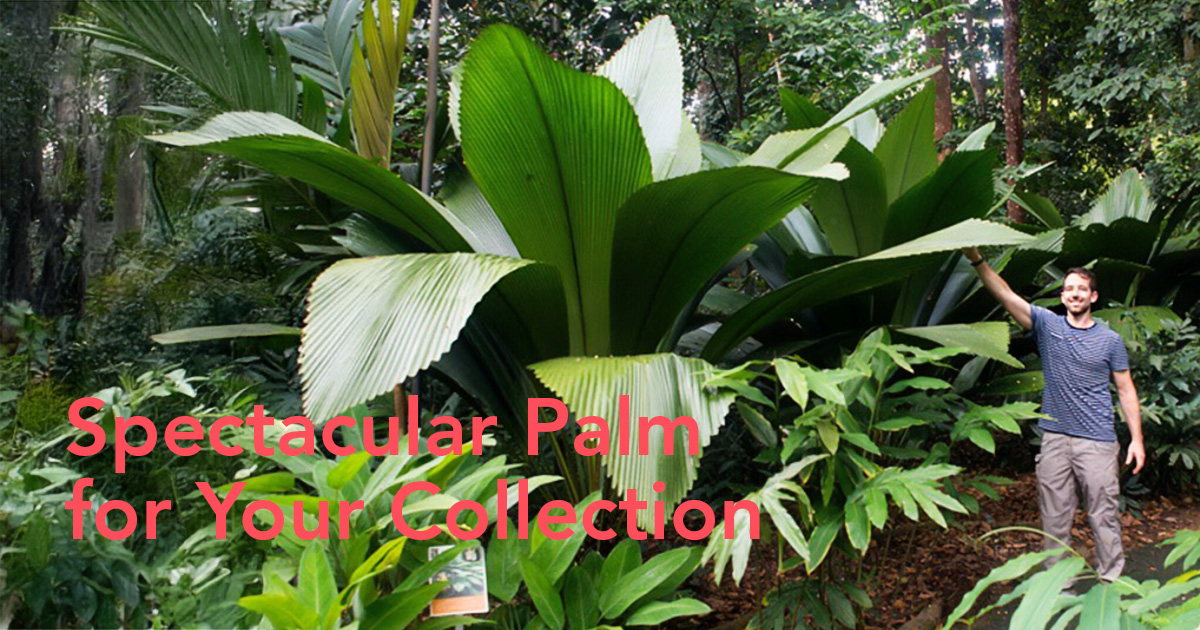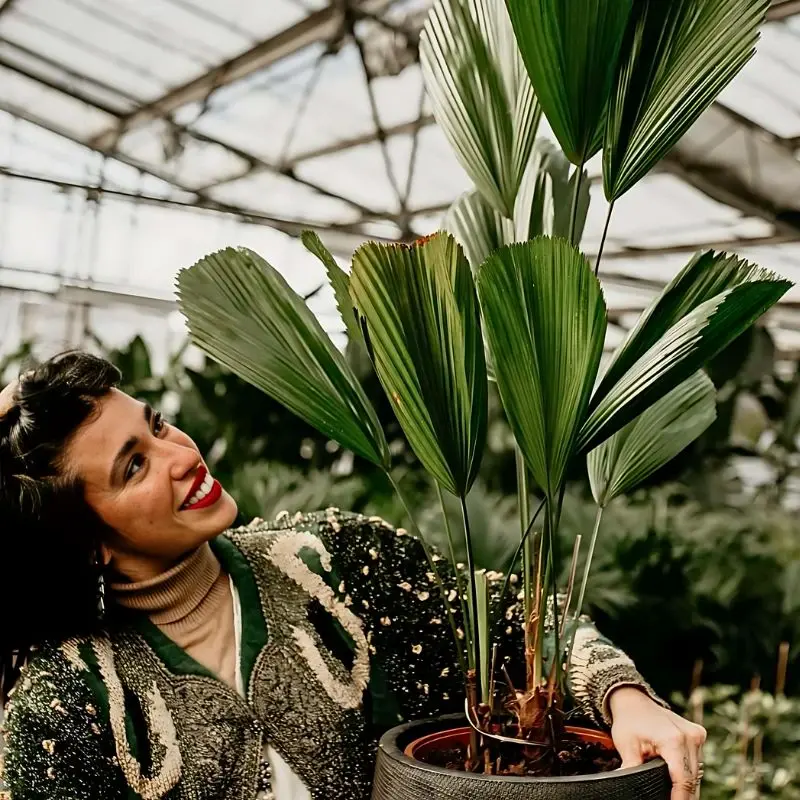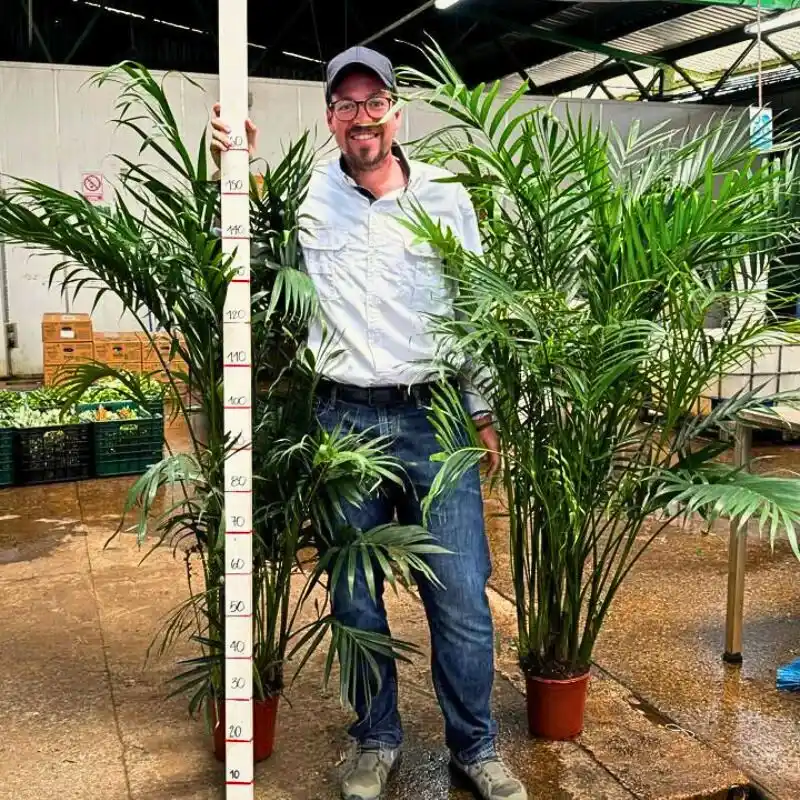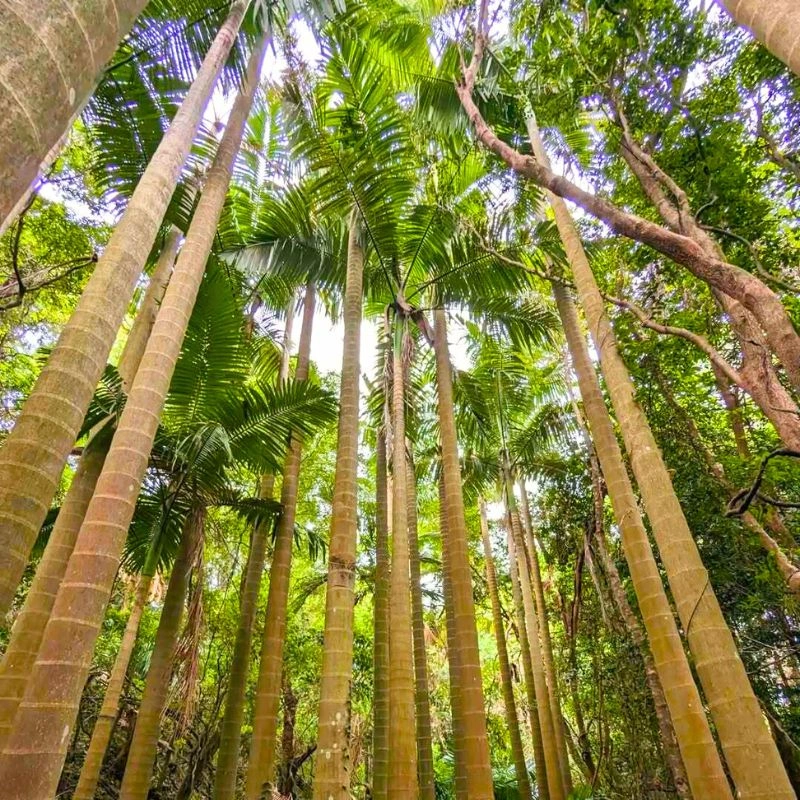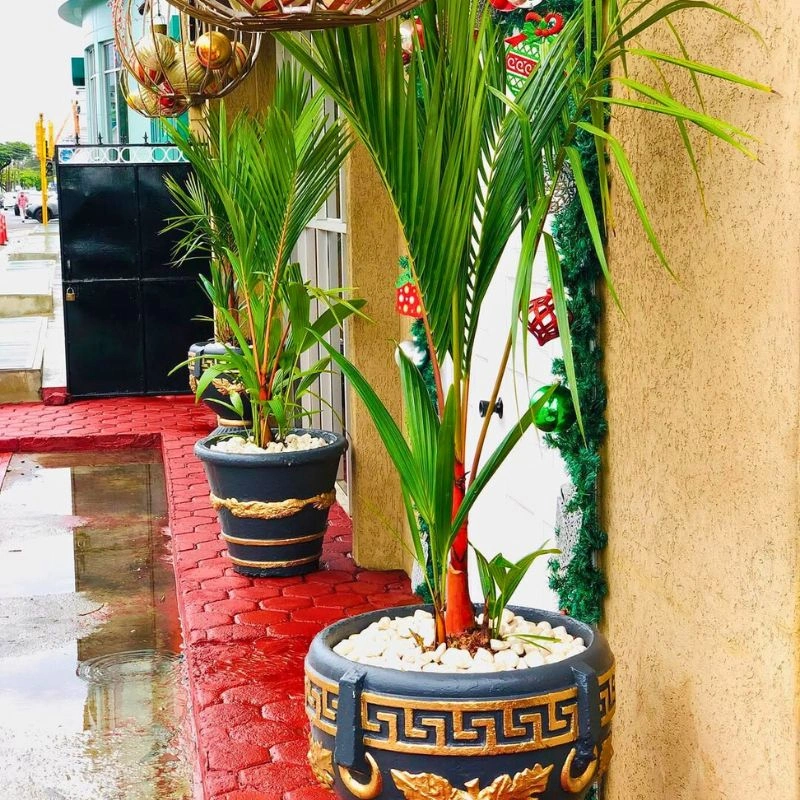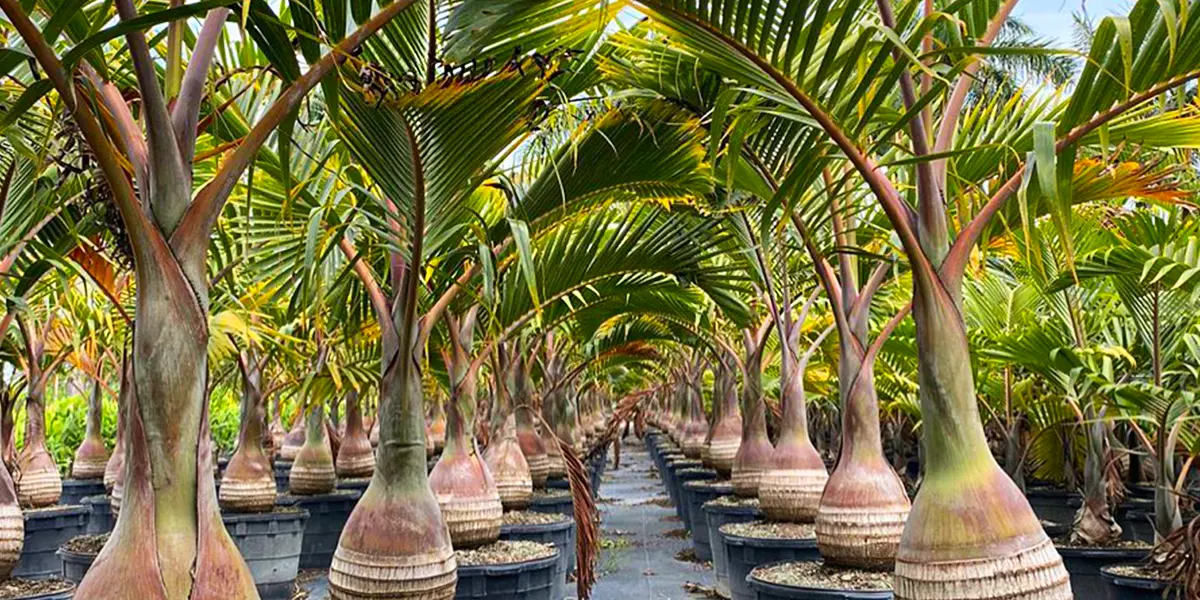The Joey Palm tree, scientifically known as Johannesteijsmannia altifrons, is one of the most spectacular shade tropical palms you can add to your garden or indoor space. With its diamond-shaped leaves, this trunkless palm is a true showstopper.
Whether you're looking for a striking indoor plant or a potted plant for your patio, the Joey Palm is a perfect choice. In this guide, we’ll cover everything you need to know about caring for this diamond Joey palm, its landscaping potential, and where to find Joey's palm tree for sale.
Overview of the Joey Palm Tree
Palm Johannesteijsmannia altifrons, also called the umbrella leaf palm, is native to the montane rainforests of Peninsular Malaysia, Thailand, and other parts of Southeast Asia. It’s a medium-sized palm with undivided foliage that can grow up to 6 meters in length, rising directly from an underground rootstock.
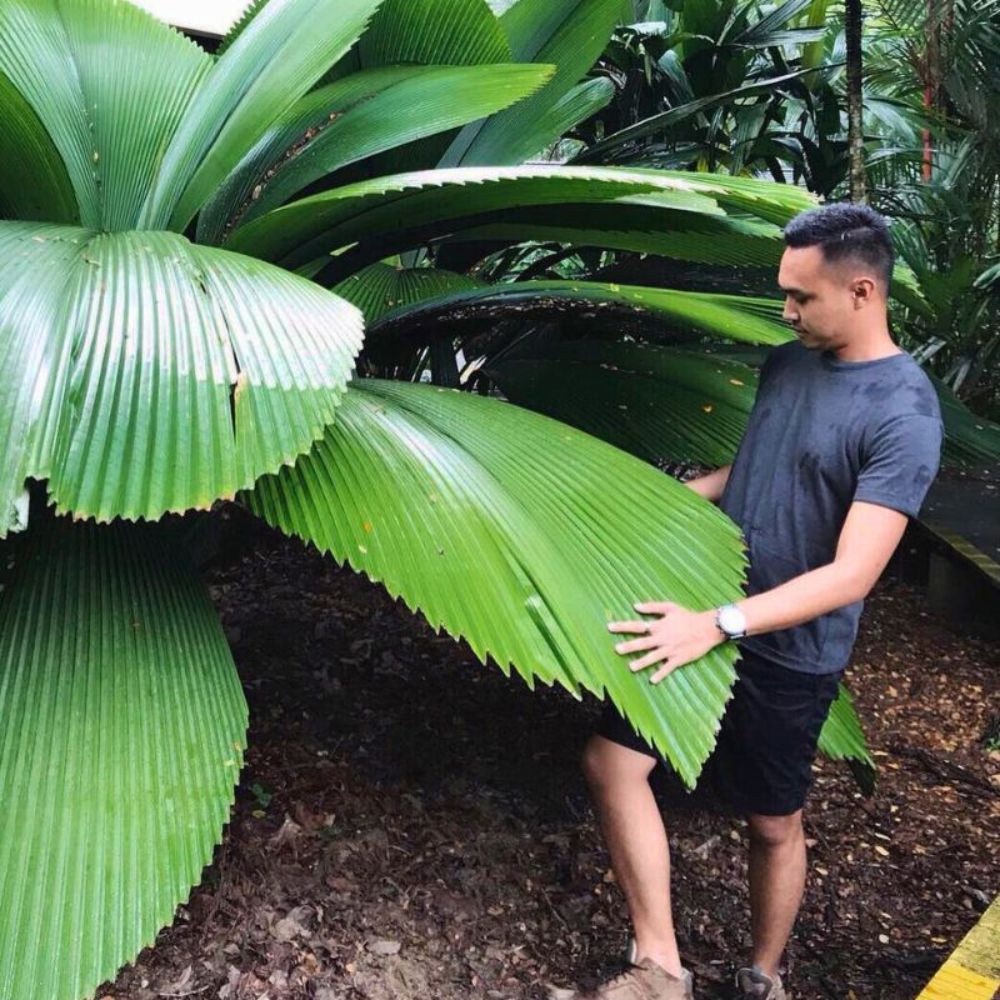
Its roughly diamond-shaped leaves have serrated edges, giving it a most bizarre appearance that’s both exotic and elegant. This palm is a favorite among plant enthusiasts for its ability to grow happily in shaded environments, making it ideal for gardens or as a potted plant brought indoors during colder months.
Environmental Conditions for Optimal Growth
Providing optimal growing conditions for the joey palm tree is key to showcasing its grand, tropical allure. By tailoring lighting, temperature, humidity, and watering practices to mimic its natural surroundings, you encourage the steady development of those iconic fronds. The following sections delve into each of these factors, offering targeted advice for both indoor and outdoor growers so you can create the perfect environment for this stunning palm.
Lighting Requirements for the Joey Palm Tree
The Joey Palm tree thrives in partial to full shade and cannot tolerate direct sunlight, especially in hot or arid climates. Young specimens, in particular, need protection from full sun and grow best in shady locations.
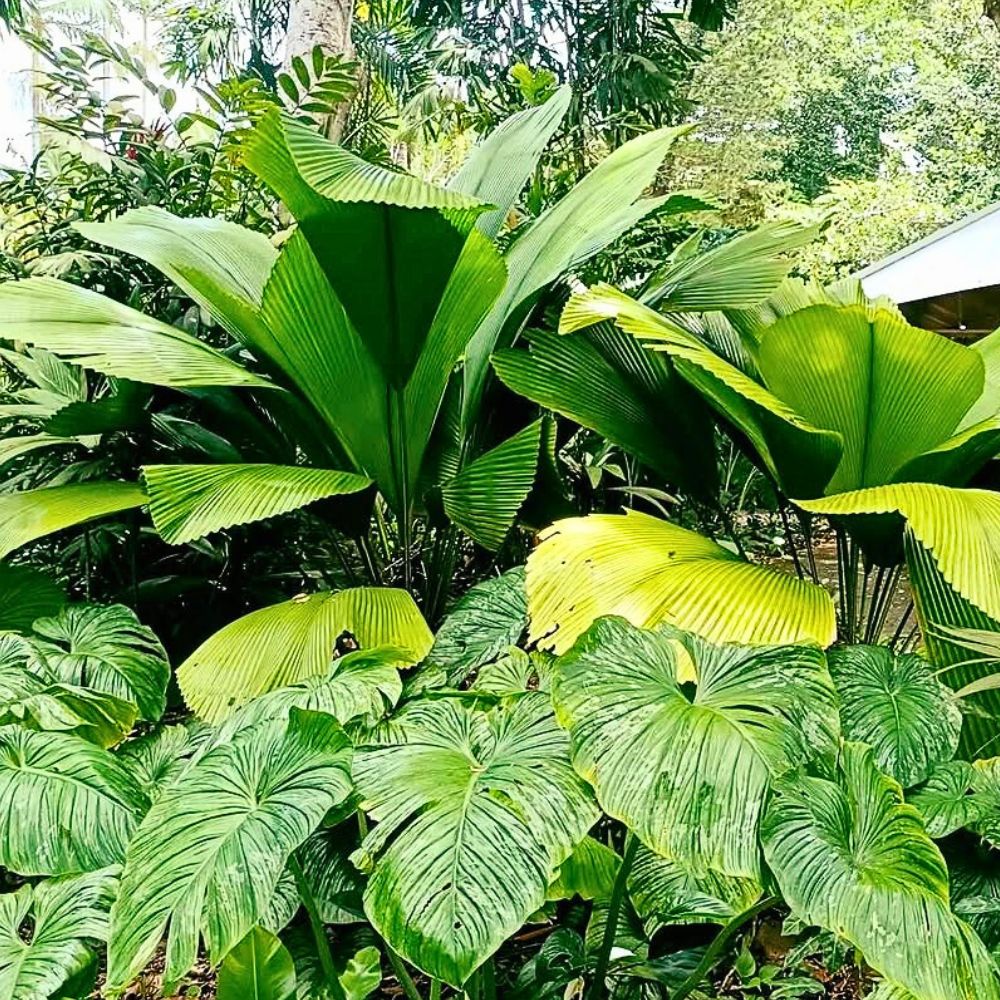
If you’re growing it indoors, place it near a window with filtered light or in a well-lit room away from direct sunlight.
Temperature and Humidity for the Joey Palm Tree
This palm is cool tolerant and can withstand temperatures as low as -4°C (25°F), making it suitable for USDA zones 10b-11. It thrives in a tropical climate with high humidity and prefers a wind-protected situation. In colder zones, it can be grown with proper protection during the winter months.
Watering Needs for the Joey Palm Tree
The Joey Palm tree requires regular watering, especially during the summer months, but overwatering can lead to root rot. Ensure the soil type is well-draining and allow the top layer to dry slightly before watering again. This palm is sensitive to waterlogged conditions, so good drainage is essential.
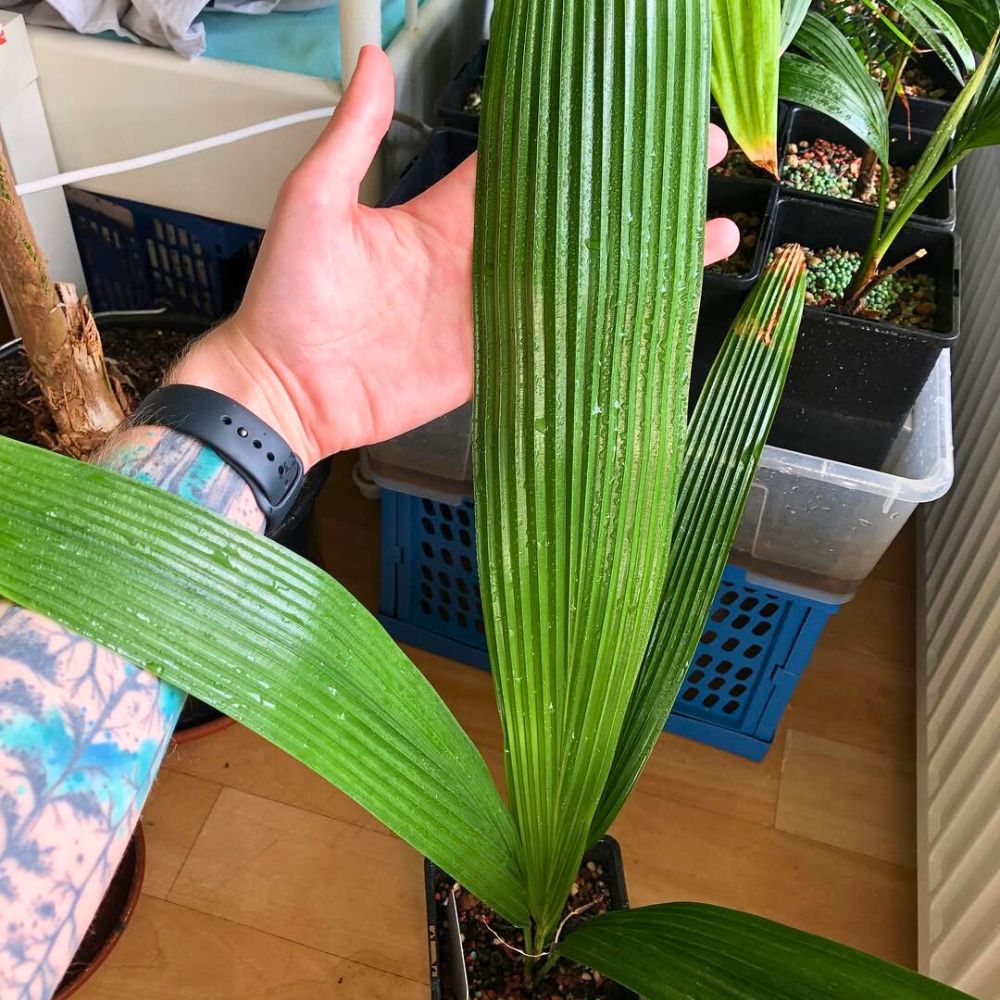
Soil and Fertilization for the Joey Palm Tree
The Joey Palm is adaptable to various soil types but prefers neutral to slightly acidic soils rich in organic matter. Use a slow-release fertilizer twice yearly during the growing season to promote healthy growth.
Ensure the fertilizer contains magnesium and potassium, as the palm is prone to nutrient deficiencies.
Pruning and Grooming Your Joey Palms
To maintain the spectacular appearance of the Joey Palm, regularly remove dried, yellowing, or damaged fronds using clean, sharp pruning shears. Pruning not only enhances its aesthetic appeal but also encourages new growth by allowing the plant to direct energy toward healthier fronds.
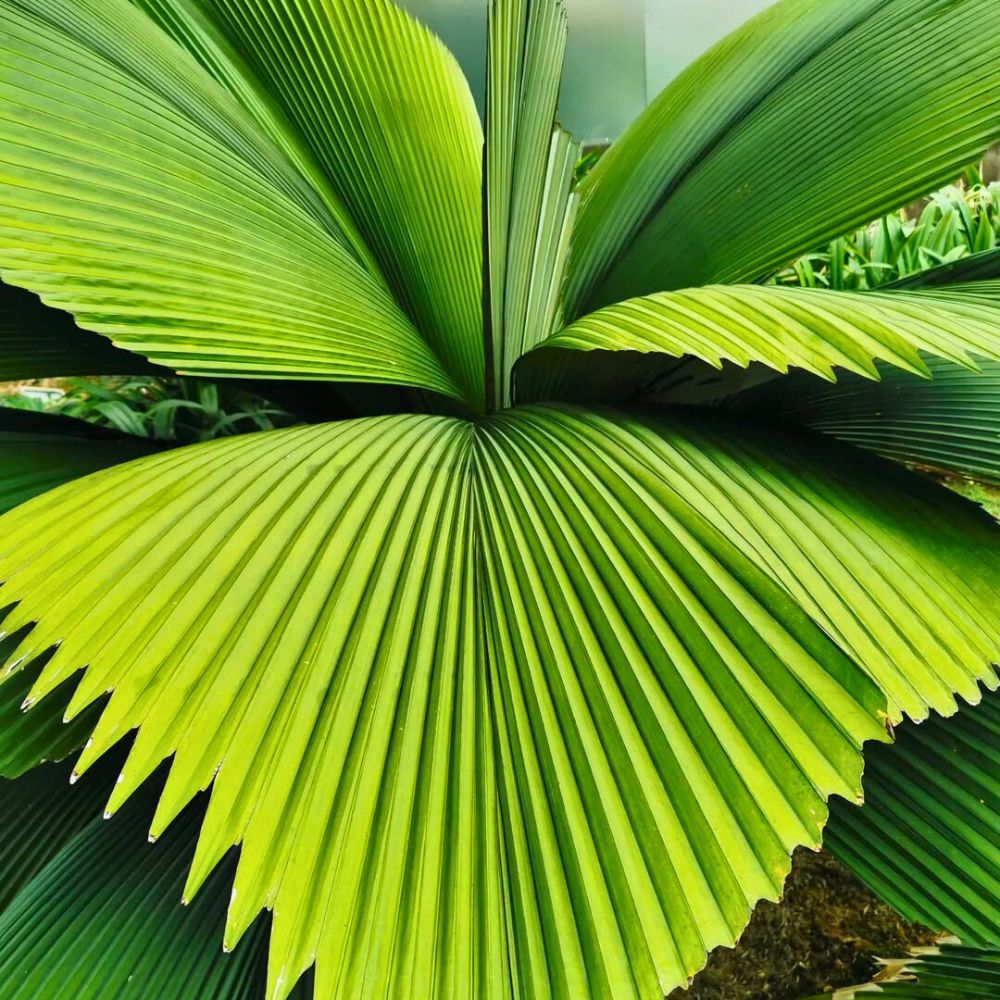
Additionally, trimming away dead leaves helps prevent pest infestations and fungal diseases that can thrive in decaying plant matter. While pruning, avoid cutting healthy green fronds, as this can stress the plant and slow its growth. Light grooming, such as wiping down the leaves to remove dust and debris, can also improve photosynthesis and keep your Joey Palm looking vibrant year-round.
Potting and Repotting the Joey Palm Tree
The Joey Palm thrives when slightly root-bound, so frequent repotting is unnecessary and should only be done every 2-3 years or when the roots begin to outgrow the current container. When repotting, select a pot that is only one size larger than the previous one to prevent excessive soil moisture retention, which can lead to root rot. Use a well-draining, nutrient-rich potting mix—ideally a blend formulated for palms or one that includes sand, perlite, and organic matter to ensure proper aeration and drainage.
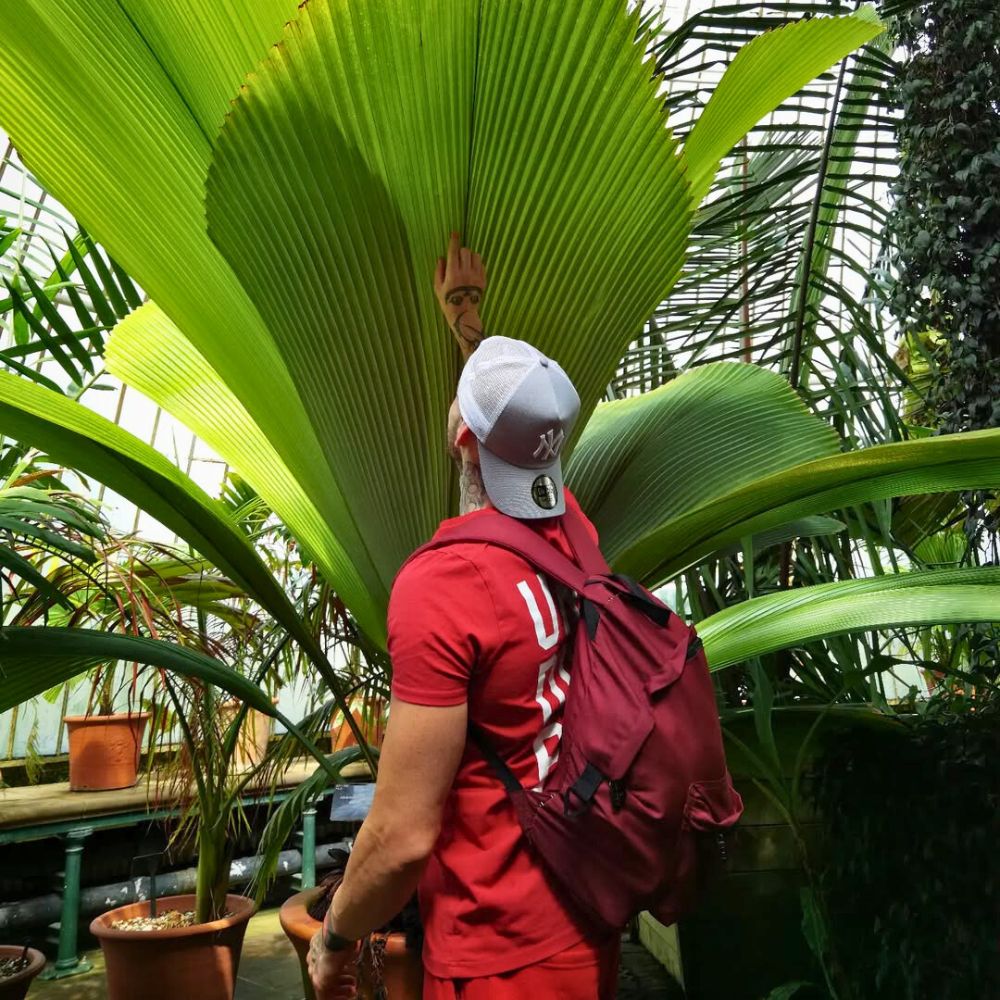
Handle the roots gently, as the Joey Palm is sensitive to root disturbance, and excessive disruption can cause transplant shock. After repotting, water the plant thoroughly and place it in a location with bright, indirect light to help it adjust to its new environment.
Controlling and Managing Diseases and Pests for Joey Palms
Like any plant, the Joey Palm may encounter a few common issues, but with proper care, these can be easily managed. Yellowing leaves are often a sign of overwatering, poor drainage, or nutrient deficiencies. To prevent this, ensure the plant is in well-draining soil, allow the top layer to dry out between waterings, and provide balanced fertilization with essential nutrients like nitrogen, magnesium, and potassium. Brown leaf tips typically indicate low humidity, underwatering, or salt buildup from tap water. Increasing humidity by misting the leaves, using a pebble tray, or placing a humidifier nearby can help, as well as ensuring a consistent watering schedule with filtered or rainwater. Slow growth may be due to inadequate light, poor soil conditions, or a lack of nutrients.
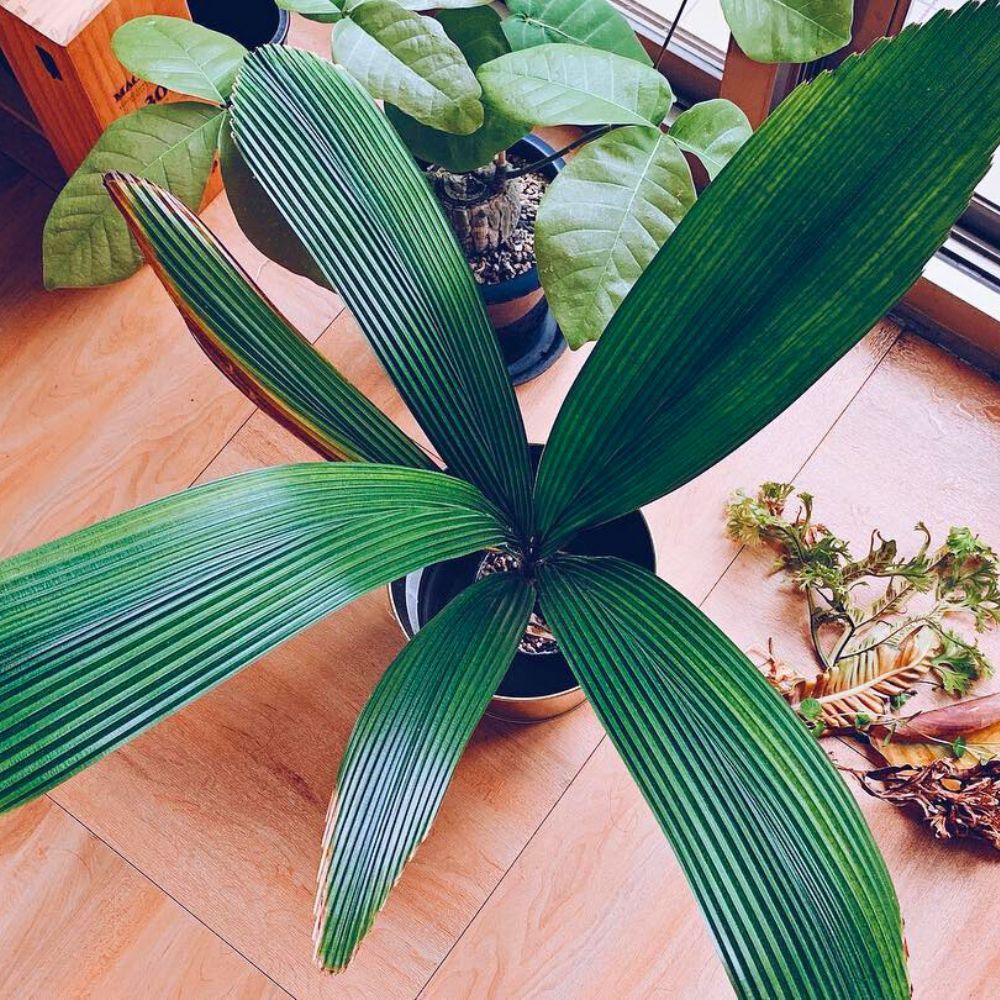
While the Joey Palm thrives in partial shade, prolonged exposure to deep shade can stunt its growth. If necessary, relocate it to a brighter area with indirect sunlight and enrich the soil with organic matter or a slow-release fertilizer to boost its health. Additionally, keep an eye out for pest infestations such as spider mites or scale insects, which can weaken the plant. Regularly wiping down the leaves, inspecting for signs of pests, and using natural insecticidal soap can help keep infestations under control. By maintaining proper watering, humidity, and light conditions, your Joey Palm will remain healthy, vibrant, and lush year-round.
How to Propagate the Joey Palm Tree
The Joey Palm can be propagated through division or seeds, with division being the most common and reliable method. The best time to divide a Joey Palm is in the warmer months of spring or summer when the plant is actively growing. Carefully remove the palm from its pot and separate the clumps, ensuring each division has at least one healthy growing stem and an established root system. Replant the divisions in well-draining soil and keep them in a warm, humid environment to encourage root development.
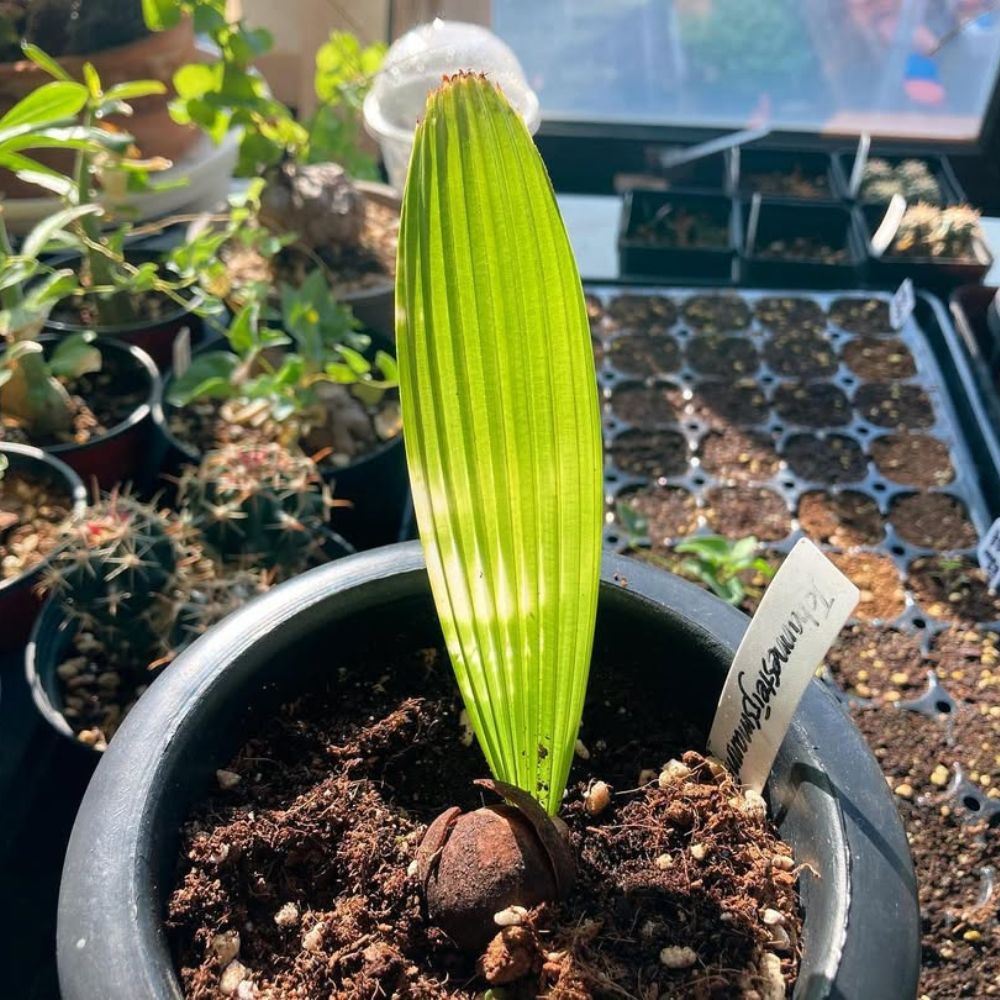
Propagation by seeds is a slower but rewarding method. Fresh Joey Palm seeds should be soaked in warm water for 24 hours before planting to enhance germination. Sow the seeds in a moist, well-draining potting mix and place them in a warm, shaded area with consistent humidity. Germination can take several weeks to months, so patience is key.
If propagation isn’t an option, you can also find a Joey Palm tree for sale online or at local nurseries, where you can choose from various sizes to suit your space.
Landscaping With the Joey Palm Tree
The Joey Palm is a highly versatile and visually striking addition to any landscape, bringing a touch of tropical elegance to gardens, patios, and indoor spaces. Its large, diamond-shaped leaves create a lush, textured look, making it an excellent choice for shaded gardens where it thrives as an understory plant. In landscape design, the Joey Palm works well as a natural focal point or as part of a layered planting scheme, complementing other tropical species like ferns, bromeliads, and orchids. Whether planted in garden beds, along pathways, or near water features, its graceful foliage enhances the overall aesthetic while providing excellent ground cover and depth to outdoor spaces.
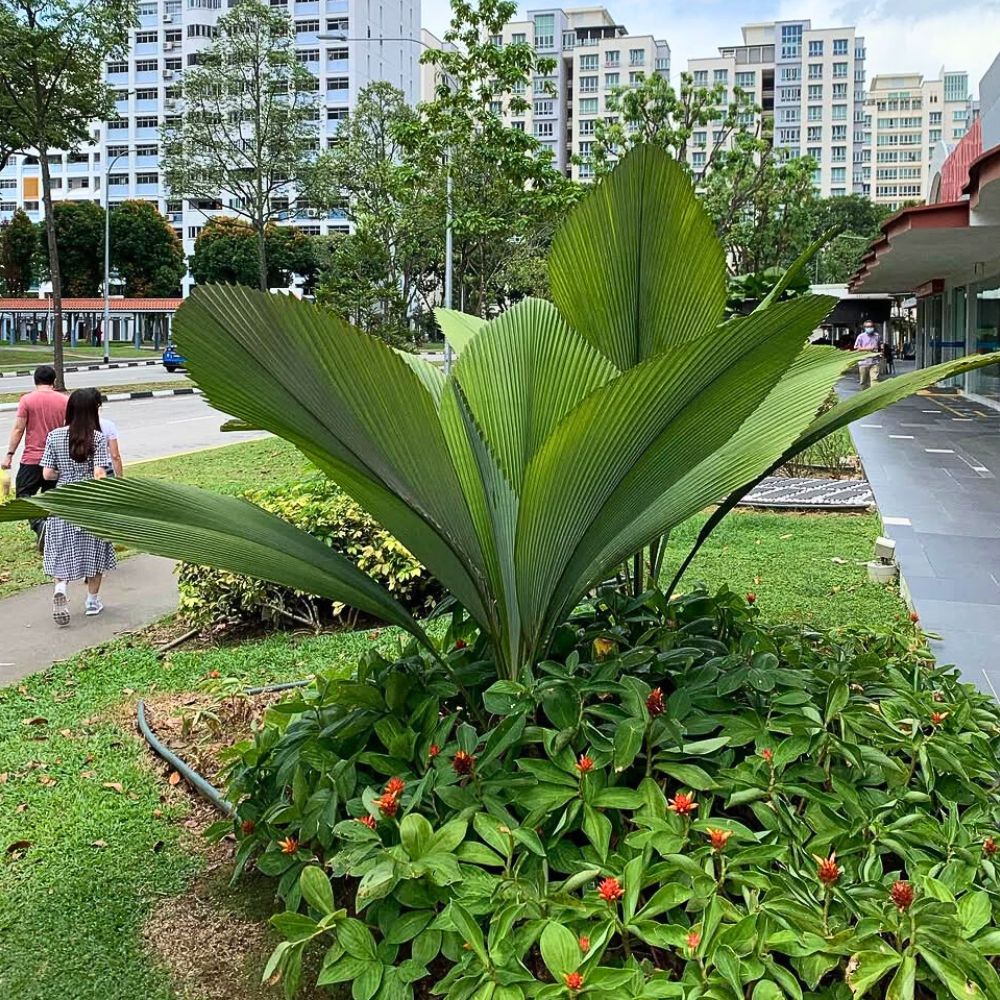
Beyond traditional garden settings, the Joey Palm is also a perfect choice for container gardening, making it ideal for patios, balconies, and poolside areas. Its compact root system adapts well to large pots, allowing homeowners to enjoy its exotic charm in smaller outdoor spaces. Additionally, the Joey Palm serves as an elegant indoor plant, thriving in well-lit atriums, offices, and living rooms where its striking foliage adds a refreshing green touch. Its ability to blend seamlessly into both natural and urban landscapes makes it a favored choice among landscapers and homeowners looking to infuse a tropical ambiance into their surroundings.
Check out Travelers Palm and Foxtail Palm, which are also great options for your landscaping needs.
Benefits of the Joey Palm Tree
-
Aesthetic Appeal; the Joey Palm’s unique, roughly diamond-shaped foliage and most bizarre appearance make it a standout addition to any space.
-
Shade Provider; its large leaves create natural shade, making it ideal for outdoor seating areas or gardens.
-
Air Purification; like many indoor plants, the Joey Palm helps improve air quality by filtering toxins and releasing oxygen.
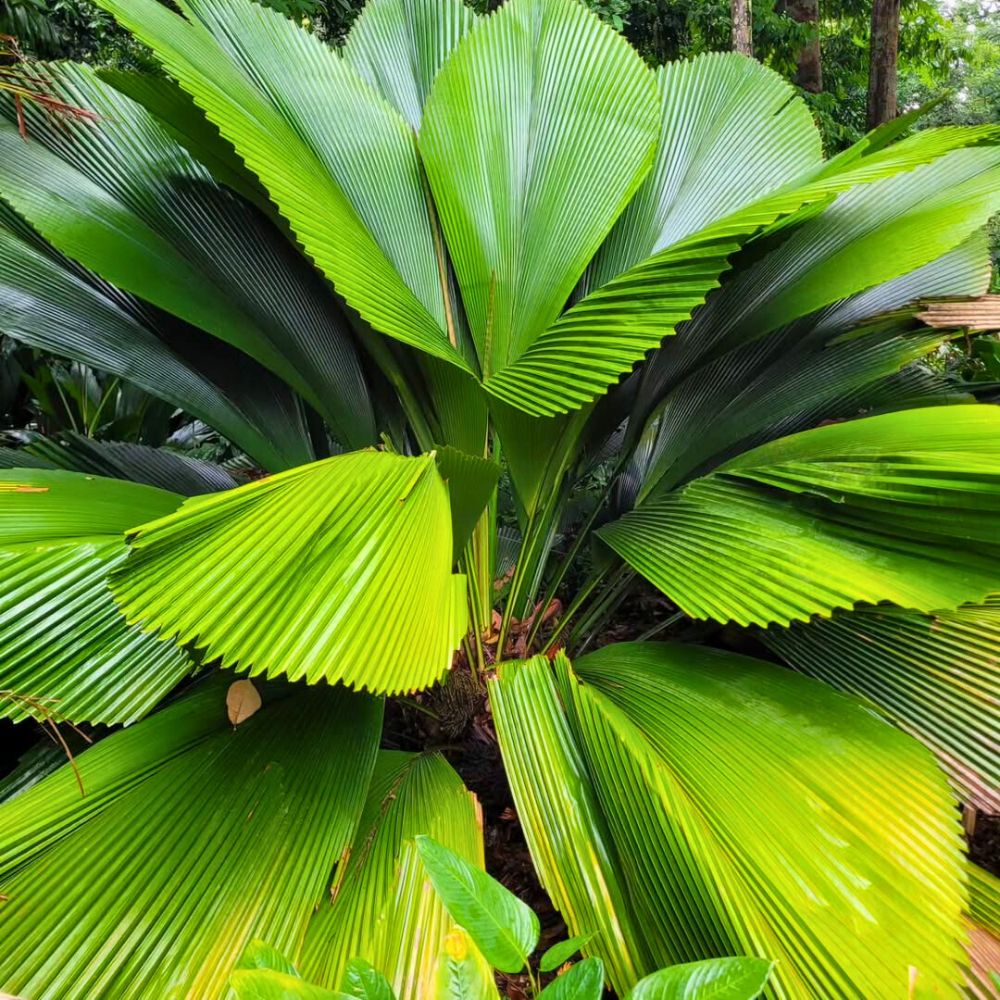
-
Low Maintenance; despite its exotic appearance, the Joey Palm is relatively easy to care for, making it suitable for both novice and experienced gardeners.
Where to Buy a Joey Palm
If you’re looking to add this spectacular palm to your collection, you can find a Joey palm tree for sale online or at local nurseries. Many sellers offer seeds or young plants, and some even provide packaging for safe delivery. Check out images of this palm online to ensure you’re getting the right species.
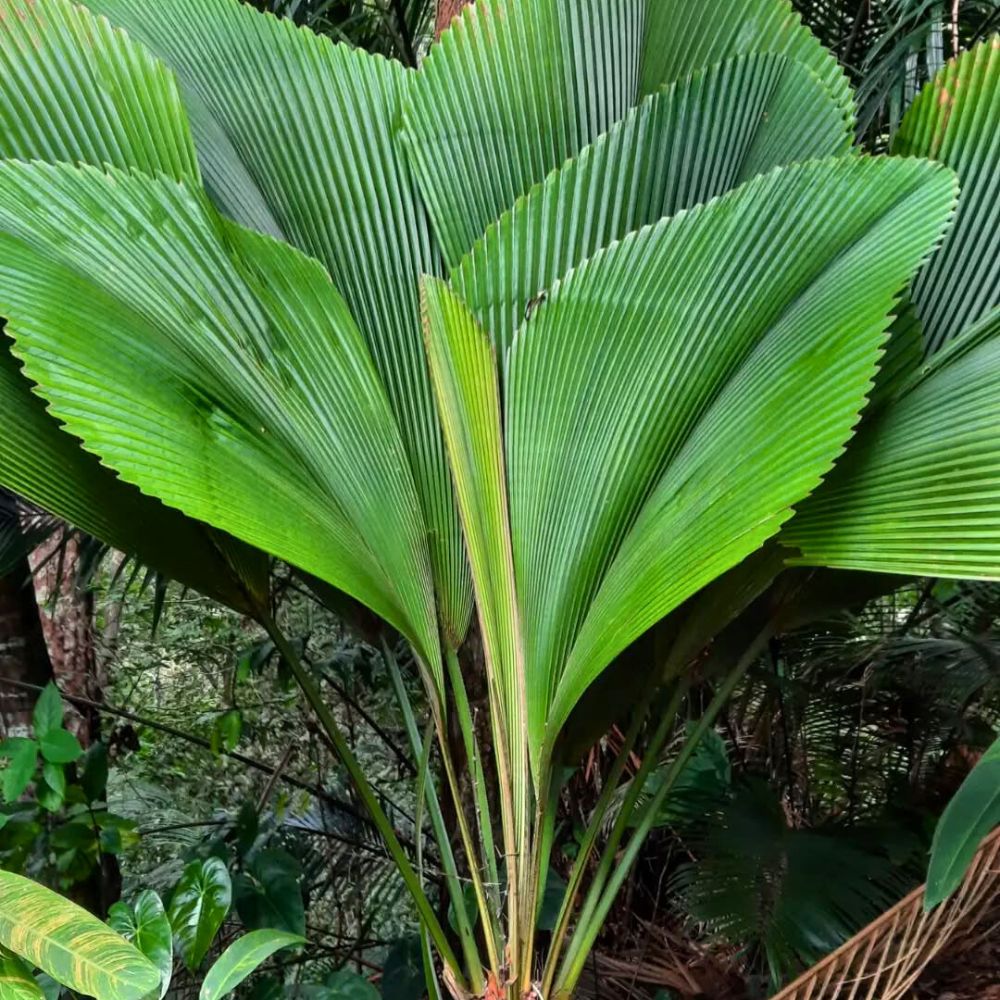
The Joey Palm tree is a spectacular shade tropical palm that brings beauty, elegance, and functionality to any environment. With proper care, it can thrive both indoors and outdoors, making it a versatile choice for plant lovers and landscapers alike. By following the care tips outlined in this guide, you can enjoy the stunning presence of the Joey Palm for years to come.
Header image by@The Horticult.

